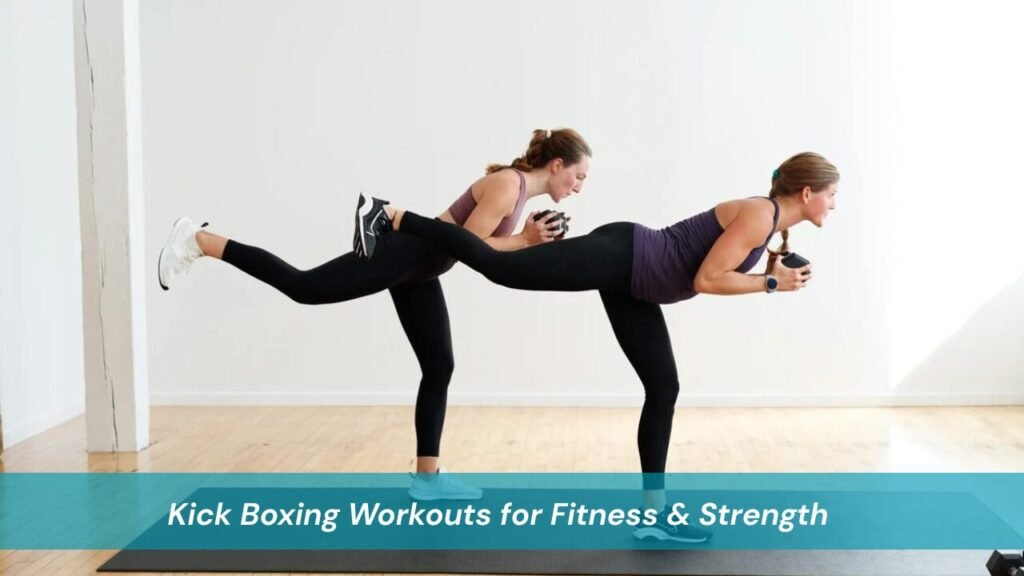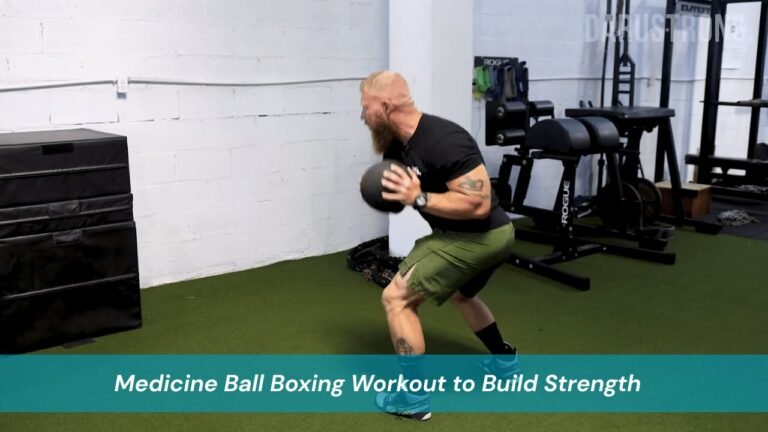Kick boxing workouts have become one of the most popular fitness trends worldwide, blending the power of martial arts with the intensity of cardio. More than just a way to burn calories, kickboxing is a complete workout for the body and mind. It can help you lose weight, gain strength, improve coordination, and even boost your mental well-being. Whether you’re looking to shake up a stale exercise routine, train like a fighter, or simply find a new way to relieve stress after a long day, kickboxing might be the answer you’ve been searching for.
In this detailed guide, we will explore everything you need to know about kick boxing workouts, from their many health benefits and training styles to routines for beginners and advanced athletes. You will also find safety tips, real-world examples, and expert insights that will give you the confidence to start your own kickboxing journey.
What Are Kick Boxing Workouts?
At its core, a kick boxing workout is a combination of martial arts-inspired moves such as punches, kicks, knees, and elbows integrated into a cardiovascular exercise routine. Unlike traditional martial arts, fitness-oriented kickboxing typically does not involve sparring or competition, but instead focuses on improving health, endurance, and strength.
There are several different styles of kickboxing workouts. Some are cardio-based, designed to keep your heart rate up and torch calories. Others lean toward a more technical approach, teaching the proper form for strikes, stances, and defensive moves. Hybrid workouts combine high-intensity interval training , strength training, and martial arts drills, giving you the best of all worlds.
Classes can be done at a gym, in a martial arts studio, or even at home with little to no equipment. While many people choose to practice with punching bags, gloves, or resistance bands, others rely only on shadowboxing, which can be equally effective for conditioning and coordination.
The Benefits of Kick Boxing Workouts
The popularity of kickboxing isn’t just hype it delivers a wide range of physical and mental benefits that go beyond what you get from a typical workout routine.
One of the most obvious advantages is calorie burning. A single 60-minute kickboxing class can burn anywhere from 600 to 800 calories, making it one of the fastest and most efficient ways to lose weight. Unlike steady-state cardio, such as running on a treadmill, kickboxing engages multiple muscle groups at once, forcing your body to work harder and burn more energy.
Kickboxing is also an excellent workout for cardiovascular health. Because the movements are fast-paced and require explosive energy, your heart rate stays elevated throughout the session. This strengthens your heart, improves blood circulation, lowers blood pressure, and reduces the risk of heart disease.
Another important benefit is muscle development. While people often associate kickboxing with cardio, the truth is that it also builds strength. Every punch requires shoulder, chest, and arm engagement. Every kick calls on your glutes, hamstrings, and quads. Even your core is constantly activated to stabilize your body during twists, pivots, and strikes. Over time, this develops lean muscle mass and functional strength, giving you a toned, athletic physique.
In addition to the physical advantages, kickboxing has powerful mental health benefits. Hitting a bag or practicing intense drills can be incredibly cathartic, serving as a natural stress reliever. The focus required to master combinations also sharpens mental clarity and concentration. Many practitioners describe feeling more confident and empowered, which carries over into other aspects of life.
Kick Boxing Workouts for Beginners
If you are new to kickboxing, it’s important to start with the basics and gradually build up intensity. Beginners should focus on learning foundational movements before attempting more complex combinations.
A typical session might begin with a short warm-up, such as jogging in place, jumping rope, or performing dynamic stretches. This helps increase blood flow, loosen up muscles, and prevent injuries. Once warmed up, you can move on to practicing basic strikes. These include the jab, cross, hook, and uppercut for punches, along with front kicks, roundhouse kicks, and side kicks for lower-body strikes.
For beginners, a simple workout could involve practicing a jab-cross combination for one minute, followed by a series of front kicks. After that, you might alternate between a cardio move, such as jumping jacks, and another strike combination. By repeating this circuit for several rounds, you’ll begin to build stamina and coordination without overwhelming your body.
The most important thing for beginners to remember is form. Proper alignment of your hands, feet, and hips ensures not only that you’re maximizing the effectiveness of your strikes but also that you are avoiding injury. Keeping your guard up, pivoting your feet during punches, and engaging your core are crucial habits to establish early on.
Advanced Kick Boxing Workouts
Once you’ve mastered the fundamentals, you can move on to more advanced workouts that increase intensity and complexity. Experienced kickboxers often incorporate heavy bag training, which allows you to strike with full power and resistance. This develops explosive strength and conditions your muscles for endurance.
High-intensity interval training is another effective approach for advanced practitioners. For example, you might perform two minutes of continuous jab-cross-hook combinations on the bag, followed by one minute of burpees or mountain climbers. After a short rest, you repeat the cycle multiple times. This type of training not only improves cardiovascular fitness but also replicates the bursts of energy required in combat sports.
Advanced workouts may also include defensive techniques such as slips, rolls, and counters. By practicing these movements, you improve your agility and reaction time, making your training more dynamic and realistic.
At-Home Kick Boxing Workouts
One of the best things about kickboxing is that you don’t need a gym membership to benefit from it. Many people successfully train at home with little to no equipment.
A typical at-home workout might start with shadowboxing in front of a mirror to practice technique and footwork. You could then combine this with bodyweight exercises like squats, push-ups, and planks to build strength. For example, you might throw fifty jab-cross punches, perform a set of squats with front kicks, drop down for push-ups, and finish with a minute of high-speed shadowboxing. By repeating this sequence several times, you can create an effective and well-rounded routine.
If you prefer guided instruction, there are plenty of free resources online. Fitness professionals and martial arts trainers offer tutorials on platforms like YouTube, where you can follow along with structured workouts. One great example is this kickboxing workout video, which provides step-by-step coaching for at-home practice.
Staying Safe While Practicing Kick Boxing
Like any high-intensity workout, kickboxing carries some risk of injury if performed incorrectly. Safety should always be a priority.
Warming up before each session is essential to prepare your muscles and joints. Wearing appropriate footwear or training barefoot on a mat reduces the chance of slipping or twisting an ankle. Beginners should start slowly and gradually build up intensity, paying close attention to their body’s signals. If something feels painful rather than challenging, it’s best to stop and rest.
Hydration is also important, as kickboxing sessions can be very demanding. Drinking water before, during, and after your workout helps maintain energy levels and prevent cramps. Finally, consider consulting a fitness trainer or martial arts coach when starting out to ensure your form is correct. Proper guidance in the early stages can prevent long-term injuries and speed up progress.
Essential Equipment for Kick Boxing Workouts
Although you can practice kickboxing with no equipment at all, certain tools can enhance your training experience. Boxing gloves and hand wraps protect your hands and wrists when striking a heavy bag. A punching bag provides resistance and allows you to practice power and accuracy. Jump ropes are excellent for warming up and improving footwork, while resistance bands can be used for strength conditioning. A yoga mat may come in handy for floor-based exercises like core training and stretching.
Having these items is not a requirement, but they can make your workouts more engaging and effective. Many people begin with shadowboxing alone and gradually add equipment as they progress.
Real-World Experiences with Kick Boxing
Beyond statistics and workout plans, the real-world experiences of kickboxing practitioners highlight just how transformative these workouts can be.
Consider the story of a 32-year-old office worker who lost 25 pounds in three months by attending three kickboxing classes per week. Not only did they shed weight, but they also reported increased energy at work and reduced stress levels.
Professional athletes also rely on kickboxing to sharpen their skills. Many mixed martial arts fighters use kickboxing as a foundation for their striking game, benefiting from the strength and endurance it develops.
Even everyday people, such as busy parents, find value in kickboxing. For them, it serves as both a physical outlet and a mental release. The act of punching and kicking through stress can be just as rewarding as the physical improvements.
Frequently Asked Questions
Is kickboxing good for beginners?
Yes. Most gyms and online programs offer beginner-friendly routines that emphasize cardio, coordination, and basic techniques without requiring combat experience.
How often should I do kickboxing workouts?
Beginners typically benefit from two to three sessions per week. As you progress, you can increase to four or five sessions depending on your fitness level and recovery ability.
Can kickboxing help with weight loss?
Absolutely. Because it burns an average of 600–800 calories per hour and engages multiple muscle groups, kickboxing is one of the most effective exercises for weight loss.
Do I need equipment to start?
No. While gloves and bags enhance the experience, shadowboxing and bodyweight exercises are perfectly suitable for beginners.
Is kickboxing safe for all ages?
Yes, with modifications. Children, adults, and even seniors can practice kickboxing safely, provided the routines are tailored to their ability levels.
Conclusion
Kick boxing workouts are more than just an exercise, they’re a lifestyle upgrade. By combining martial arts techniques with high-intensity training, they deliver an efficient and effective way to improve physical fitness, build strength, and enhance mental health. Whether practiced at home or in a gym, with or without equipment, kickboxing offers something for everyone.
If you’re ready to transform your fitness routine, there’s no better time to start than today. Step into your stance, throw that first jab, and discover the power of kickboxing for yourself.




